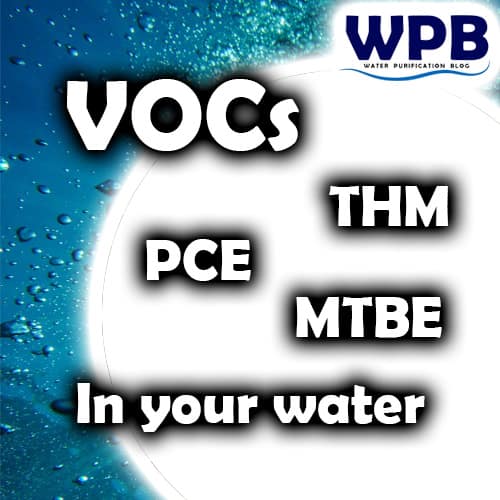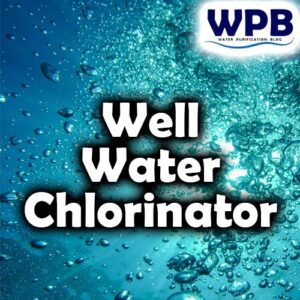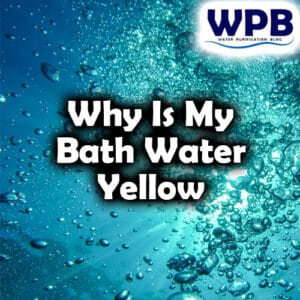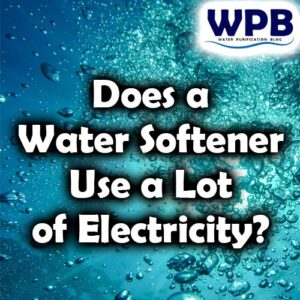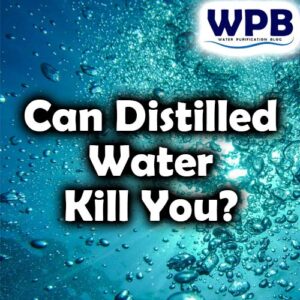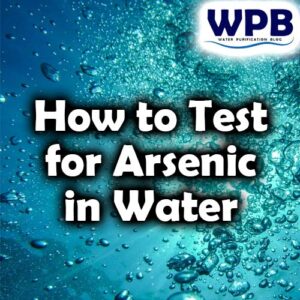Volatile Organic Compounds, or VOCs, are chemicals that contain carbon atoms and are known to evaporate easily at room temperature. They can come from a range of sources, including everyday products such as cleaning solutions, paints, and adhesives, and they can have a range of negative effects on both human health and the environment. In this article, we will explore the sources of VOCs, the potential health effects of exposure, and how to remove them from water.
Table of Contents
Sources of VOCs
VOCs are present in a wide range of products that we use every day, from cleaning solutions and personal care products to building materials and furnishings.
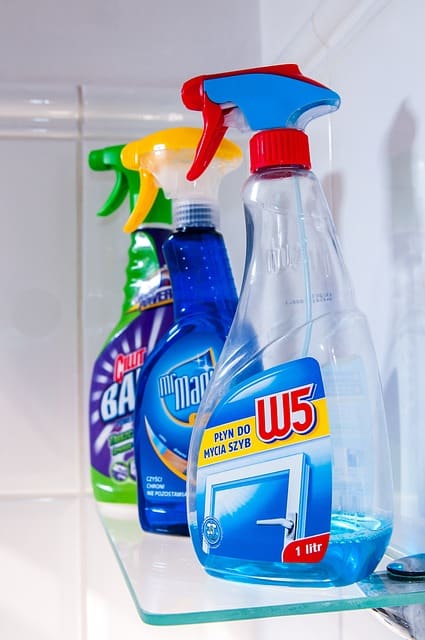
Some common sources of VOCs include:
- Paints, varnishes, and lacquers
- Cleaning supplies, such as disinfectants, bleach, and air fresheners
- Personal care products, such as hair sprays and perfumes
- Pesticides and insecticides
- Building materials, such as carpet, flooring, and insulation
- Furnishings, such as upholstery and pressed wood products
It is important to note that VOCs can also be released from products that do not contain them as a primary ingredient. For example, when we use cleaning solutions, the VOCs may be released as byproducts of the chemical reactions that occur during the cleaning process.
Health Effects of VOCs
Exposure to VOCs can have a range of negative effects on human health, including eye, nose, and throat irritation, headaches, dizziness, and nausea.

In some cases, exposure to high levels of VOCs can lead to more serious health problems, such as liver and kidney damage, central nervous system damage, and even cancer.
It is important to note that different VOCs can have different effects on human health, and the severity of these effects can vary depending on factors such as the length of exposure and the concentration of the VOCs in the air.
Top 3 VOCs found in water
THM (Trihalomethane)
Trihalomethanes (THMs) are a group of chemical compounds that can form when chlorine or bromine is used to disinfect water that contains natural organic matter. These compounds are classified as disinfection by-products (DBPs), and they include several chemicals such as chloroform, bromodichloromethane, dibromochloromethane, and bromoform. THMs can be harmful to human health, and they are considered as potential carcinogens.
What are the side effects of trihalomethanes?
Exposure to trihalomethanes can occur when consuming water containing these compounds. Some potential health effects include bladder and colorectal cancer, reproductive problems, and developmental delays in children. High levels of THMs have also been linked to liver, kidney, and central nervous system problems.
Water treatment plants typically monitor and control THM levels to comply with regulations. However, if you use a private well or are concerned about the quality of your tap water, you should take measures to reduce your exposure to THMs.
One way to reduce THMs in drinking water is by using a granular activated carbon (GAC) filter. GAC filters work by trapping organic compounds, such as THMs, in the filter media. These filters can effectively remove THMs, as well as other contaminants, such as volatile organic compounds (VOCs) and pesticides. It is important to note that the efficiency of the filter depends on the type of GAC used and the flow rate of the water through the filter. Therefore, it is essential to follow the manufacturer’s instructions and replace the filter regularly.
Another way to reduce THMs in drinking water is to switch to alternative disinfection methods that do not produce THMs. For example, some water treatment plants use ozone, ultraviolet (UV) light, or chlorine dioxide instead of chlorine. These methods can effectively kill bacteria and viruses in the water without producing THMs. However, it is important to note that these methods may have their own drawbacks and limitations.
In addition to reducing THMs in drinking water, it is essential to minimize their formation in the first place. This can be achieved by reducing the organic matter in the water before disinfection. For example, using coagulants or adding activated carbon can remove some of the organic matter from the water. pH and temperature also play a role in the formation of THMs, and they can be controlled to reduce THM levels in the water.
In conclusion, THMs are a group of chemicals that can form when chlorine or bromine is used to disinfect water containing organic matter. These compounds can be harmful to human health, and they are considered potential carcinogens.
To reduce your exposure to THMs, you can use a GAC filter, switch to alternative disinfection methods, or reduce the organic matter in the water before disinfection. It is important to note that the efficiency of these methods depends on various factors, and it is essential to follow the manufacturer’s instructions and regularly maintain the filtration system.
PCE (Perchloroethylene)
Perchloroethylene, also known as tetrachloroethylene or PCE, is a colorless liquid with a sweet odor. It is primarily used in industrial settings for the production of fluorinated compounds, as well as for dry cleaning, cleaning and degreasing, and in lubricants, adhesives, and sealants. However, it can also pose risks to human health and the environment.
What are the side effects of PCE?
Exposure to Perchloroethylene can cause a range of health effects, including dizziness, headache, and confusion, as well as liver and kidney damage with long-term exposure. It has also been classified as a probable human carcinogen by the International Agency for Research on Cancer (IARC) and the US Environmental Protection Agency (EPA).
Perchloroethylene can contaminate groundwater and surface water through improper disposal and accidental spills. It is not easily biodegradable and can persist in the environment for a long time, posing a threat to both human health and the ecosystem.
To remove perchloroethylene from water, several methods can be used. One common method is to use activated carbon filtration, which involves passing the contaminated water through activated carbon that adsorbs the perchloroethylene molecules. Another method is air stripping, which involves bubbling air through contaminated water to transfer the perchloroethylene from the water to the air, where it can be removed through ventilation.
In conclusion, Perchloroethylene is a chemical with multiple uses in industry and manufacturing, but it also poses risks to human health and the environment. To remove it from water, various methods such as activated carbon filtration and air stripping can be used
MTBE (Methyl tert-butyl ether)
MTBE, or methyl tert-butyl ether, is a chemical compound that has been used as an additive in gasoline to increase its oxygen content and reduce air pollution emissions. However, its use has led to contamination of drinking water supplies, with adverse effects on human health and the environment.
What are the side effects of MTBE?
MTBE contamination in water can cause a foul taste and odor, rendering it undrinkable even at trace levels. According to an EWG analysis, drinking water supplies for over 15 million Americans are contaminated with MTBE, a suspected carcinogen. Exposure to MTBE can cause health effects such as nausea, dizziness, headaches, and increased risk of cancer.
MTBE can quickly move through the soil and contaminate groundwater. Therefore, its removal from water is a significant concern. Well owners can use granular activated carbon or charcoal to remove MTBE from their water. Activated carbon filters have been used to improve the taste or remove odor of the water, although undesirable tastes and odors are not necessarily related to the presence of MTBE in water.
In conclusion, MTBE is a chemical compound that has contaminated drinking water supplies in the US and poses a risk to human health. The use of activated carbon or charcoal is an effective method to remove MTBE from water.
Removing VOCs from Water
VOCs can enter our water supply through a range of sources, including spills, runoff from agricultural or industrial sites, and leaching from landfills. Once in the water, they can be difficult to remove, as they do not break down easily and can persist in the environment for a long time.
There are a number of methods that can be used to remove VOCs from water, including:
Activated Carbon Filtration
Activated carbon filtration method involves passing the water through a bed of activated carbon, which can adsorb the VOCs and remove them from the water.
Reverse Osmosis
Reverse osmosis method involves forcing the water through a membrane that can remove the VOCs. This can be an effective method for removing VOCs, but it can be expensive and may not be suitable for all types of water.
Air Stripping
This method involves blowing air through the water, which causes the VOCs to evaporate into the air. The VOCs can then be captured and removed from the air using a range of methods.
Biological Treatment
This method involves using microorganisms to break down the VOCs in the water. This can be an effective method for removing certain types of VOCs, such as those found in industrial wastewater.
Distillation
This method involves heating the water to create steam, which is then condensed to remove the VOCs. This method can be effective for removing a range of VOCs, but it can be energy-intensive and expensive.
Conclusion
In conclusion, VOCs are a common and potentially harmful chemical that can be found in a range of everyday products. Exposure to VOCs can have a range of negative effects on human health and the environment, and it is important to take steps to minimize our exposure to them

Who am I?
I am working as a water treatment technical manager and I have more than 25 years of practical experience in water purification.
Water purification expert
After many years of experience in water purification, I want to share some of my knowledge and get people to know the real importance of water quality.
Water purification and water treatment are very complex themes, so it is important to explain them in an easy-to-read way.
On this blog, you will find many understandable, easy-to-read information about water purification.
I hope you enjoy it, find some useful information, and thank You for reading.
More info on my work and my expertise on water purification can be found on my LinkedIn profile.

